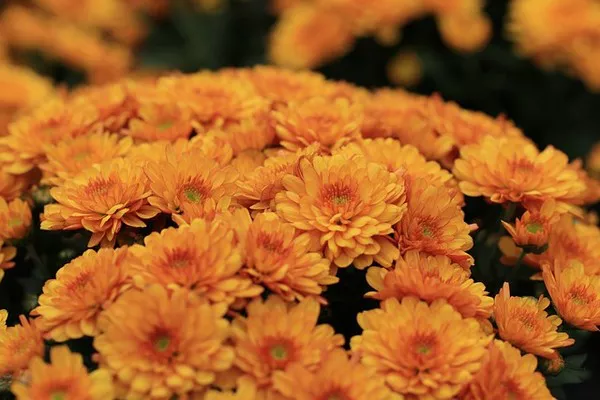Flowers possess an undeniable charm, captivating us with their vibrant colors, delicate petals, and alluring fragrances. Unfortunately, their beauty is ephemeral, as they tend to wilt and wither shortly after being cut. However, with the advent of various preservation techniques, flowers can now be enjoyed for extended periods. One such method gaining popularity is preserving flowers with glycerin. This article provides a comprehensive guide to preserving flowers using glycerin, outlining the process, benefits, and best practices for successful preservation.
Understanding Glycerin Preservation
Glycerin, a colorless and odorless liquid derived from plants or animal fats, has been used for centuries in various industries, including food, cosmetics, and pharmaceuticals. Its hygroscopic nature, meaning it absorbs and retains moisture from the environment, makes it an excellent agent for preserving flowers. Glycerin treatment replaces the water content within the flowers’ cells, preventing wilting and decay while maintaining their natural appearance and flexibility.
Benefits of Glycerin Preservation
Preserving flowers with glycerin offers a range of benefits that have contributed to its popularity among flower enthusiasts and professionals alike:
1.Longevity: Glycerin-treated flowers can last several weeks to months, unlike cut flowers that typically last only a few days. This longevity allows individuals to enjoy the beauty of flowers for an extended period.
2. Retained Beauty: Flowers preserved with glycerin maintain their natural colors, textures, and shapes. The process does not cause the petals to become brittle or discolored, resulting in a visually pleasing and life-like appearance.
3. Flexibility: Unlike dried flowers that often become fragile and brittle, glycerin-treated flowers retain their flexibility, allowing for various creative applications in floral arrangements, crafts, and décor.
4. Preserved Fragrance: Glycerin preservation often retains the delicate fragrance of the flowers, enhancing the sensory experience of the preserved blooms.
5. Versatility: Glycerin can be used to preserve a wide variety of flowers, from delicate roses to robust sunflowers, expanding the possibilities for creative arrangements.
Step-by-Step Guide to Preserving Flowers with Glycerin
Preserving flowers with glycerin requires careful attention to detail and a systematic approach. The following step-by-step guide outlines the process:
1. Selecting Flowers: Choose flowers at their peak freshness, preferably in the morning when they are well-hydrated. Flowers with thicker petals tend to respond better to glycerin preservation.
2. Preparing the Glycerin Solution: Create a glycerin solution by mixing one part glycerin with two parts water. Warm water can help dissolve the glycerin more effectively.
3. Cutting the Stems: Trim the flower stems at a diagonal angle to enhance water absorption. Remove any leaves or foliage that might be submerged in the glycerin solution, as they can lead to decay.
4. Submerging in Glycerin Solution: Place the flowers in a container with the glycerin solution. The solution should cover the stems and part of the flowers. Weight the flowers down if necessary to keep them submerged.
5. Waiting Period: Allow the flowers to absorb the glycerin for about 2-6 days. Thicker flowers may require longer soaking times.
6. Checking Readiness: Check for readiness by gently touching the petals. They should feel soft, supple, and slightly translucent.
7. Draining and Drying: Once the flowers are adequately preserved, remove them from the glycerin solution and gently pat them dry with a paper towel. Allow them to air dry in a cool, dark place for a day or two.
8. Trimming and Styling: Trim the stems to your desired length and arrange the preserved flowers in your chosen display or arrangement.
Best Practices for Successful Glycerin Preservation
To achieve optimal results when preserving flowers with glycerin, consider the following best practices:
1.Experimentation: Given that glycerin absorption can vary based on factors such as flower type, size, and environmental conditions, it’s advisable to experiment with a few flowers initially to determine the optimal soaking time.
2. Quality Glycerin: Use high-quality glycerin to ensure the best preservation results. Impurities or additives in low-quality glycerin may compromise the process.
3. Hygiene: Ensure that all containers, tools, and hands are clean to prevent the introduction of bacteria that can lead to decay during the preservation process.
4. Proper Storage: Store glycerin-preserved flowers away from direct sunlight, heat sources, and high humidity, as these factors can affect the longevity of the preserved blooms.
5. Regular Monitoring: Periodically check the progress of the preservation process. Over-soaking can lead to overly soft flowers, while under-soaking may result in incomplete preservation.
6. Patience: Glycerin preservation is a gradual process that requires patience. Rushing the soaking time or drying process can compromise the quality of the preserved flowers.
In Conclusion
Preserving flowers with glycerin is a captivating art that allows the beauty of nature to be enjoyed well beyond their natural lifespan. By following the steps and best practices outlined in this guide, individuals can successfully preserve a wide range of flowers, creating stunning arrangements and decorative pieces that bring joy and aesthetic delight to any environment. Whether you are an experienced florist or a passionate DIY enthusiast, glycerin preservation offers a timeless technique to cherish the ephemeral beauty of flowers.


